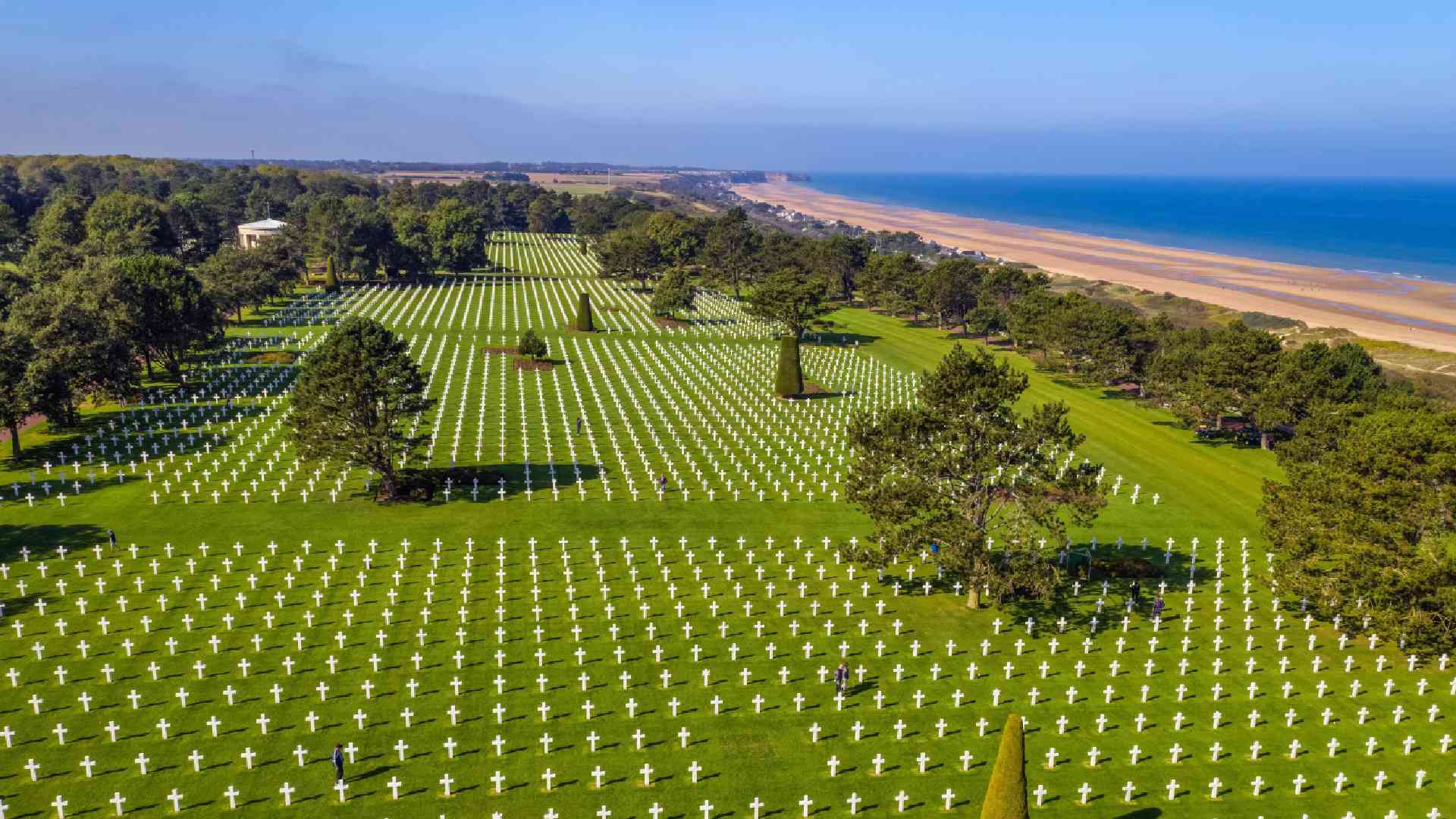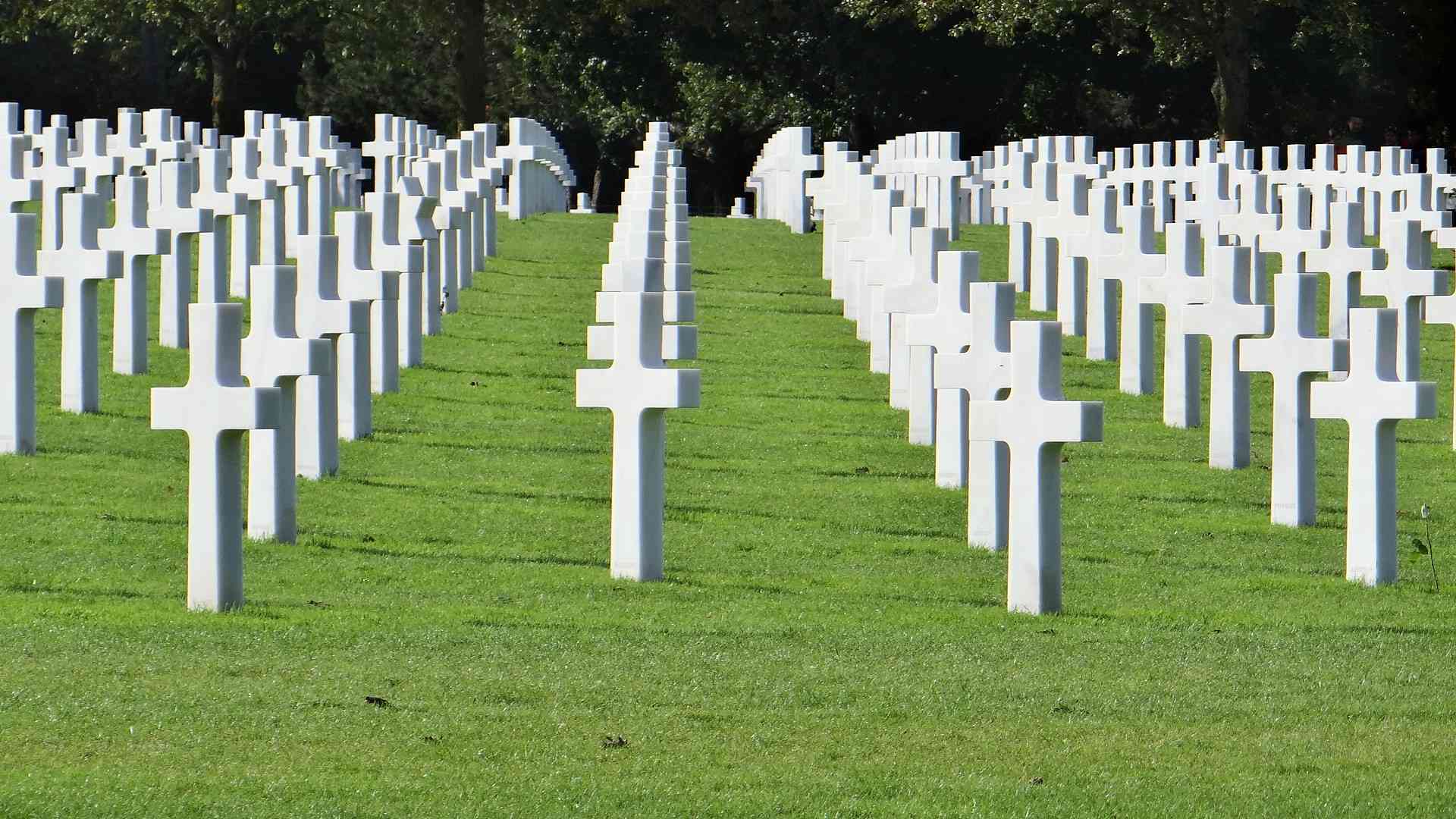
Normandy American Cemetery and Memorial – Colleville-sur-Mer:
Description: The Normandy American Cemetery and Memorial is a solemn and significant military cemetery located in Colleville-sur-Mer, Normandy, France. It is situated on a cliff overlooking Omaha Beach, one of the D-Day landing sites during World War II. The cemetery is dedicated to honoring the American soldiers who lost their lives during the Normandy landings on June 6, 1944, and the subsequent Battle of Normandy. It serves as a place of remembrance and pays tribute to the sacrifices made by the soldiers in the liberation of France.
Visitor Fee:
There is no entry fee to visit the Normandy American Cemetery and Memorial. The site is open to the public and welcomes visitors who wish to pay their respects and learn about the history of the D-Day landings.
Transportation:
Colleville-sur-Mer is located in the Normandy region of France and is accessible by various means of transportation:
- Car: If you have your own vehicle or a rental car, driving to the cemetery allows for flexibility in exploring the surrounding area.
- Tour Bus: Many tour operators offer day trips from nearby cities, such as Bayeux or Caen, that include a visit to the cemetery and other D-Day related sites.
- Train: The closest train station to Colleville-sur-Mer is Bayeux, and from there, you can take a taxi or a bus to reach the cemetery.
Things to Do:
- Pay Respects: Visitors can walk through the beautifully maintained cemetery and pay their respects to the fallen soldiers buried here.
- Visitor Center: The cemetery’s visitor center provides historical information, exhibits, and a short film about the D-Day landings and the significance of the cemetery.
- Overlook Omaha Beach: From the memorial plaza, visitors can take in a poignant view of Omaha Beach and reflect on the historic events that took place there.
- Interpretative Panels: The cemetery features interpretative panels that provide insights into the soldiers’ stories and the events of D-Day and the Battle of Normandy.
- Attend Memorial Services: On certain occasions, the cemetery hosts special memorial services and events to honor the fallen soldiers.

Why People Enjoy Coming Here:
People visit the Normandy American Cemetery and Memorial for several reasons:
- Historical Significance: The cemetery holds immense historical significance as a site where thousands of American soldiers who fought during D-Day and the Battle of Normandy are laid to rest.
- Remembrance: Visitors come here to pay their respects and honor the bravery and sacrifice of the soldiers who fought for freedom during World War II.
- Educational Experience: The visitor center and interpretative panels provide valuable educational information about the D-Day landings and the war’s impact on Normandy and the world.
- Solemn Atmosphere: The cemetery’s serene and well-maintained setting allows visitors to reflect on the events of the past and the profound impact of war.
How Old is This Place:
The Normandy American Cemetery and Memorial was established shortly after the Normandy landings in June 1944. It was dedicated on July 18, 1956, and has since become a place of remembrance for both Americans and the people of France.
Additional Nearby Attractions:
- Omaha Beach: Explore Omaha Beach, located just below the cemetery, to gain a deeper understanding of the challenges the soldiers faced during the D-Day landings.
- Pointe du Hoc: Visit Pointe du Hoc, a prominent cliff-top site where U.S. Army Rangers scaled the cliffs on D-Day to neutralize German artillery positions.
- Utah Beach Museum: The Utah Beach Museum, a short drive from Colleville-sur-Mer, offers exhibits and artifacts related to the Utah Beach landings.
List of Activities:
- Pay respects to the fallen soldiers at the cemetery.
- Learn about the historical events and significance of the D-Day landings at the visitor center and interpretative panels.
- Reflect on the sacrifice and bravery of the soldiers while overlooking Omaha Beach.
- Participate in any memorial services or events hosted at the cemetery.
- Visit nearby D-Day related sites to gain a comprehensive understanding of the events of June 6, 1944.